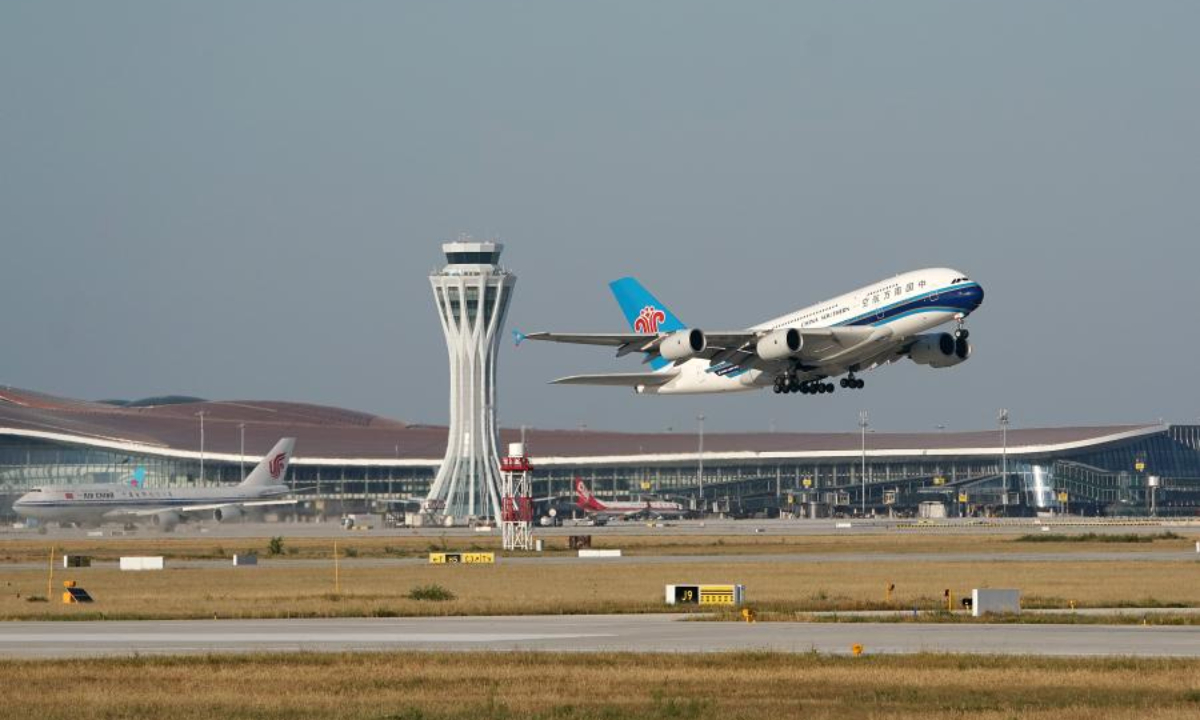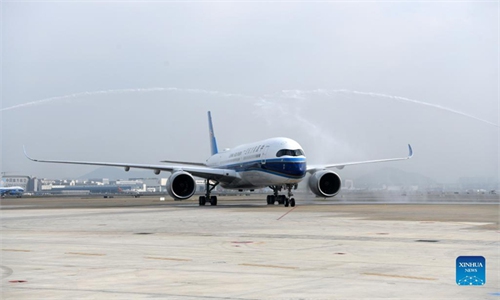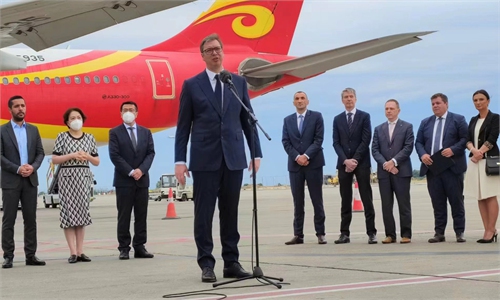Three state-owned airlines predict a record high loss in H1, greater than last year’s shortfall

China Southern Airlines flight CZ3001 takes off at the Daxing International Airport in Beijing, capital of China, Sept. 25, 2019. File photo:Xinhua
Three state-owned airlines predicted a record high of loss of around 50 billion yuan ($7.4 billion) in the first half of this year, greater than the total loss in 2021, driven by COVID-19 outbreaks.
Air China predicted the highest loss from 18.5 billion to 21 billion yuan, followed by China Eastern Airlines, from 17 billion yuan to 19.5 billion yuan, and China Southern Airlines from 10.2 billion yuan to 12.1 billion yuan.
In comparison, the total net loss attributable to shareholders of listed companies in the three major airlines last year amounted to 40.9 billion yuan.
The carriers attributed the loss to the repeated flareups of COVID-19, the rising cost of fuel and oil and the depreciation of the yuan, which increases the pressure on costs.
The Chinese aviation industry has been through a difficult first half of the year, with the number of daily flights reaching their lowest level at 2,967 in the first six months of 2022, only 17.8 percent of the same period in 2019.
China Southern Airlines, Air China and China Eastern Airlines are the three major state-owned air carriers in China. In 2021, the revenue of these three companies accounted for 57.31 percent of the total revenue of domestic airlines, according to thepaper.cn.
China Eastern Airlines, headquartered in Shanghai, said it experienced severe challenges from the impact of the epidemic in the first half of the year.
China Southern said its capacity and passenger revenue in the first half of the year decreased by 34.3 percent and 42.6 percent year-on-year, respectively.
Air China said that domestic outbreaks affected many places since the beginning of this year which led to a significant reduction in domestic routeswhile international flights continue to be limited. Furthermore, rising oil prices and exchange rate fluctuations have further aggravated the company's efficiency.
To help the industry, the government has provided targeted financial support, injecting 3 billion yuan to each of the three main carriers, 2 billion yuan to Capital Airport Holdings Ltd, and pre-allocating 3.29 billion yuan in central subsidies for the first phase of domestic passenger flights.
In terms of financial credit, on the basis of implementing emergency loans worth 65.6 billion yuan for airlines and airports, the CAAC also have issued an additional emergency loans worth 150 billion yuan for airlines.
The Chinese aviation market is experiencing a strong recovery, with flight numbers in July exceeding 10,000 per day, the Chinese civil aviation regulator said, highlighting that between July 8 and 10 the country witnessed more than 12,000 flights, recovering to 64.5 percent of pre-epidemic levels.
The three aviation giants witnessed a total loss in Q1 this year of 21.16 billion yuan with Air China leading the red numbers.
Global Times



